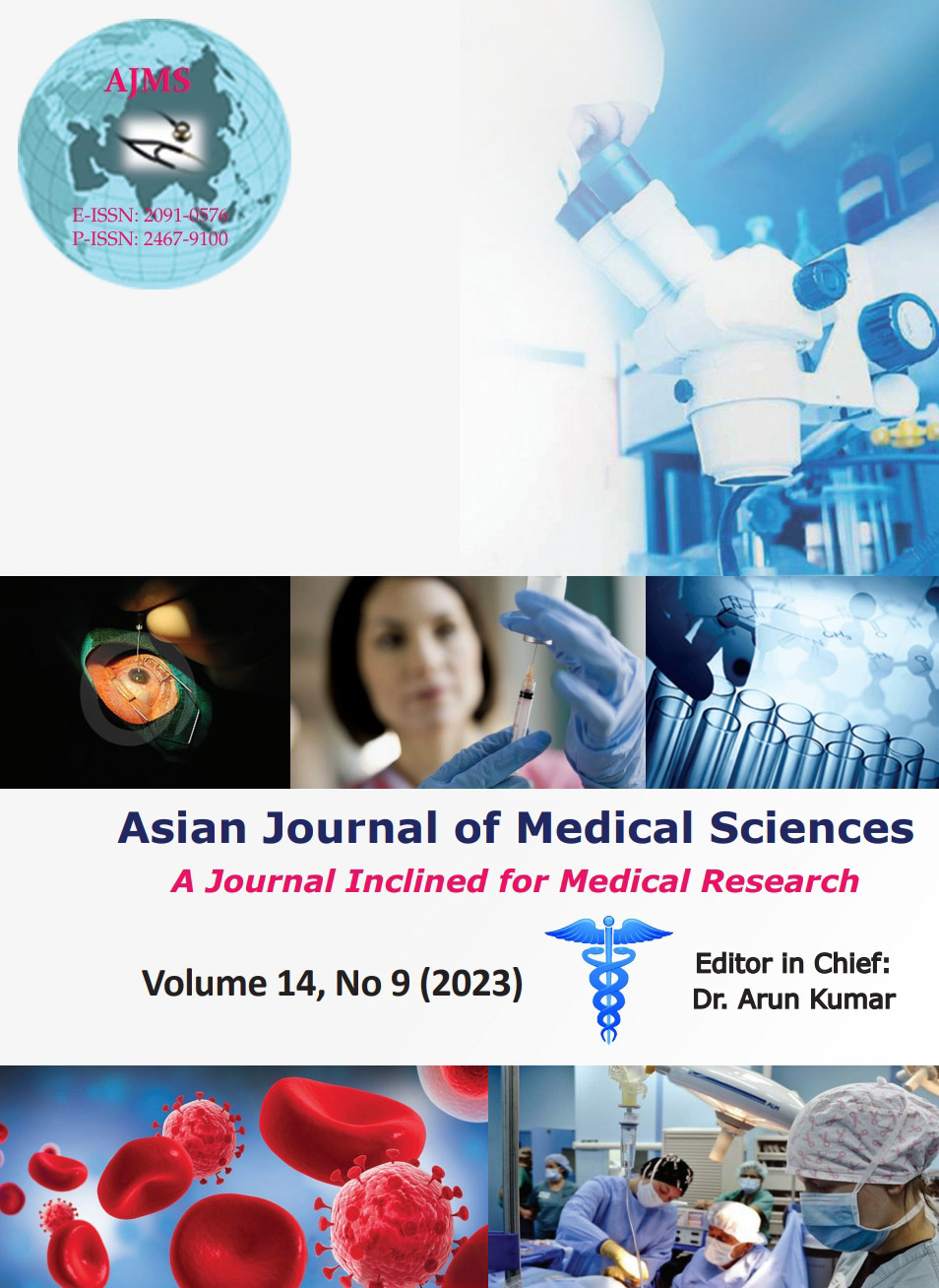Role of Wilms’ tumor 1 in diagnosis and grading of astrocytomas
Keywords:
Astrocytomas; Gliomas; Immunohistochemistry; Wilms’ tumor 1Abstract
Background: Wilms’ tumor 1 (WT1) mutation has recently been detected in gliomas. Growing data indicate that WT1 mutation plays a causal role in gliomagenesis and is overexpressed in most glioblastomas. Emerging immunotherapy targeting WT1 has shown to be effective in resistant glioblastomas in clinical trials. WT1 expression and its potential utility in various grades of astrocytomas is still unclear and needs further elucidation. The evaluation of WT1 can be done by molecular or immunohistochemical methods. As immunohistochemistry is easier with wider routine use, immunoexpression of this biomarker was studied.
Aims and Objectives: This study aimed to evaluate WT1 immunoexpression across different histological grades of astrocytomas and differentiate low-grade astrocytomas from reactive astrogliosis.
Materials and Methods: This was an observational prospective study on 54 cases of astrocytomas.
Results: In the present study a total of 54 cases have been diagnosed as astrocytomas. Grade IV was the most common (31%) followed by grade II (44%). WT1 score correlated with histological tumor grades (P<0.001) with a higher score in a higher grade. It was also observed that different tumor grades depicted two distinct expression patterns. WT1 score and pattern were valuable in differentiating high- and low-grade astrocytomas.
Conclusion: This study supports the oncogenic role of WT1 in astrocytomas. WT1 was found to be valuable in distinguishing different grades of astrocytomas. The scoring and distinctive patterns of WT1 can aid in distinguishing high-grade and low-grade astrocytomas. However, one needs to be careful in pilocytic astrocytomas in which there is a mixed expression. WT1, therefore, appears to be an attractive immunohistochemistry (IHC) marker to be used concomitantly with other IHC markers in astrocytomas. In addition, the frequent expression of WT1 in astrocytomas supports its promising role in immunotherapy and its potential to guide patient selection for targeted immunotherapy.
Downloads
Downloads
Published
How to Cite
Issue
Section
License
Copyright (c) 2023 Asian Journal of Medical Sciences

This work is licensed under a Creative Commons Attribution-NonCommercial 4.0 International License.
Authors who publish with this journal agree to the following terms:
- The journal holds copyright and publishes the work under a Creative Commons CC-BY-NC license that permits use, distribution and reprduction in any medium, provided the original work is properly cited and is not used for commercial purposes. The journal should be recognised as the original publisher of this work.
- Authors are able to enter into separate, additional contractual arrangements for the non-exclusive distribution of the journal's published version of the work (e.g., post it to an institutional repository or publish it in a book), with an acknowledgement of its initial publication in this journal.
- Authors are permitted and encouraged to post their work online (e.g., in institutional repositories or on their website) prior to and during the submission process, as it can lead to productive exchanges, as well as earlier and greater citation of published work (See The Effect of Open Access).




